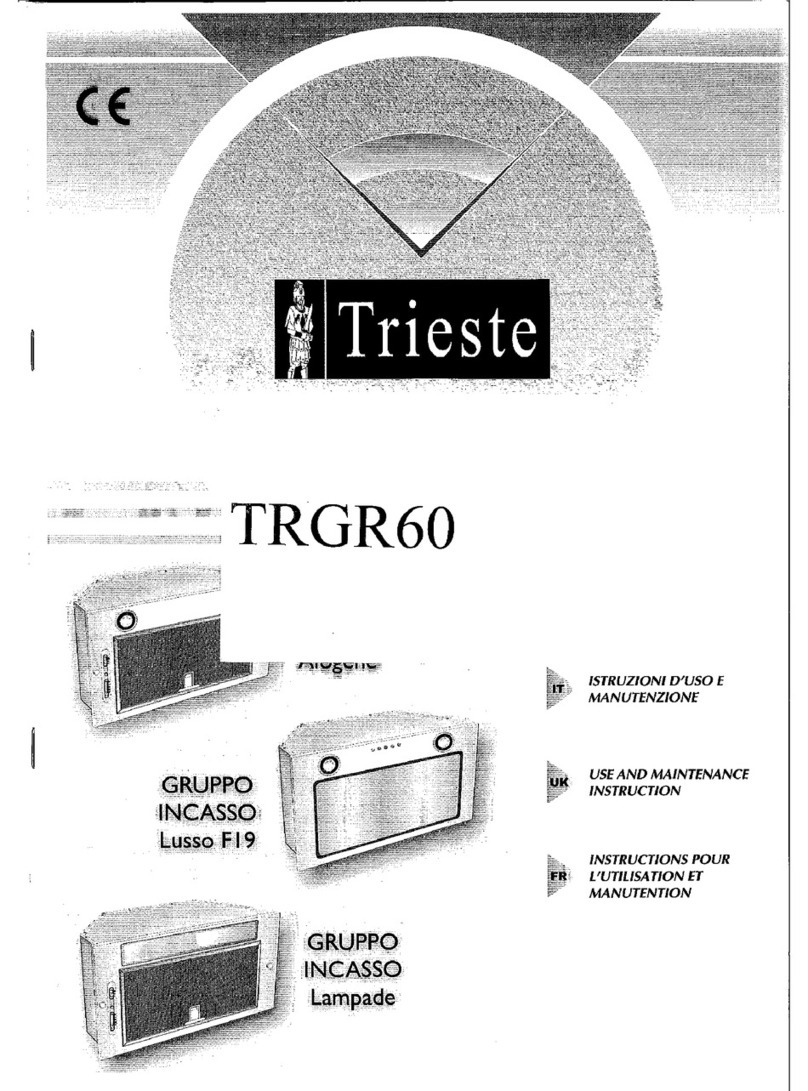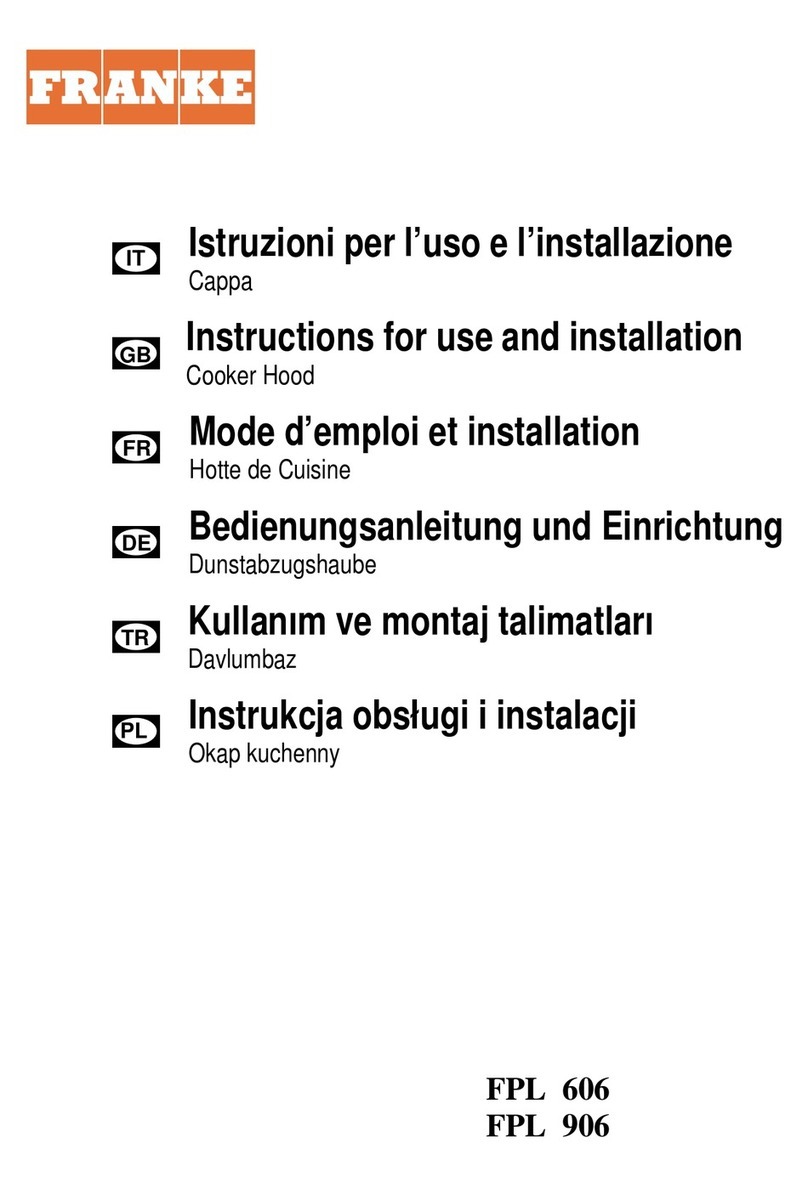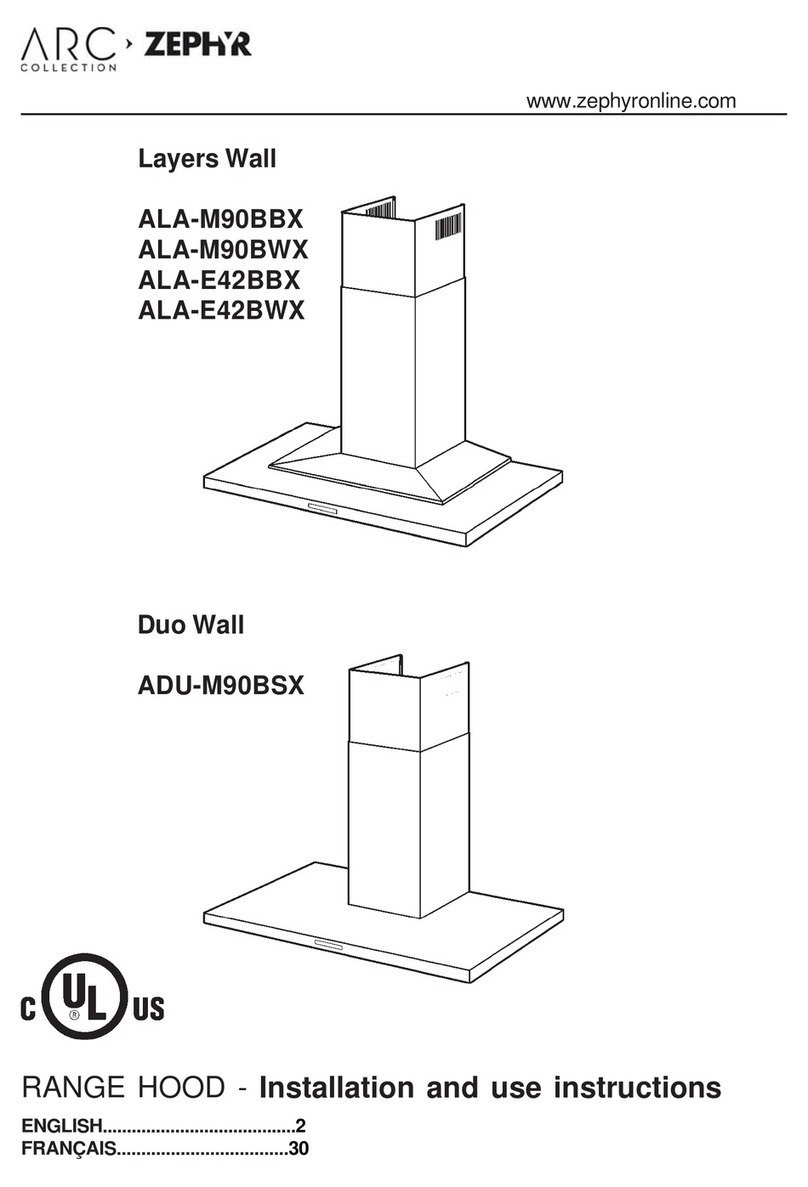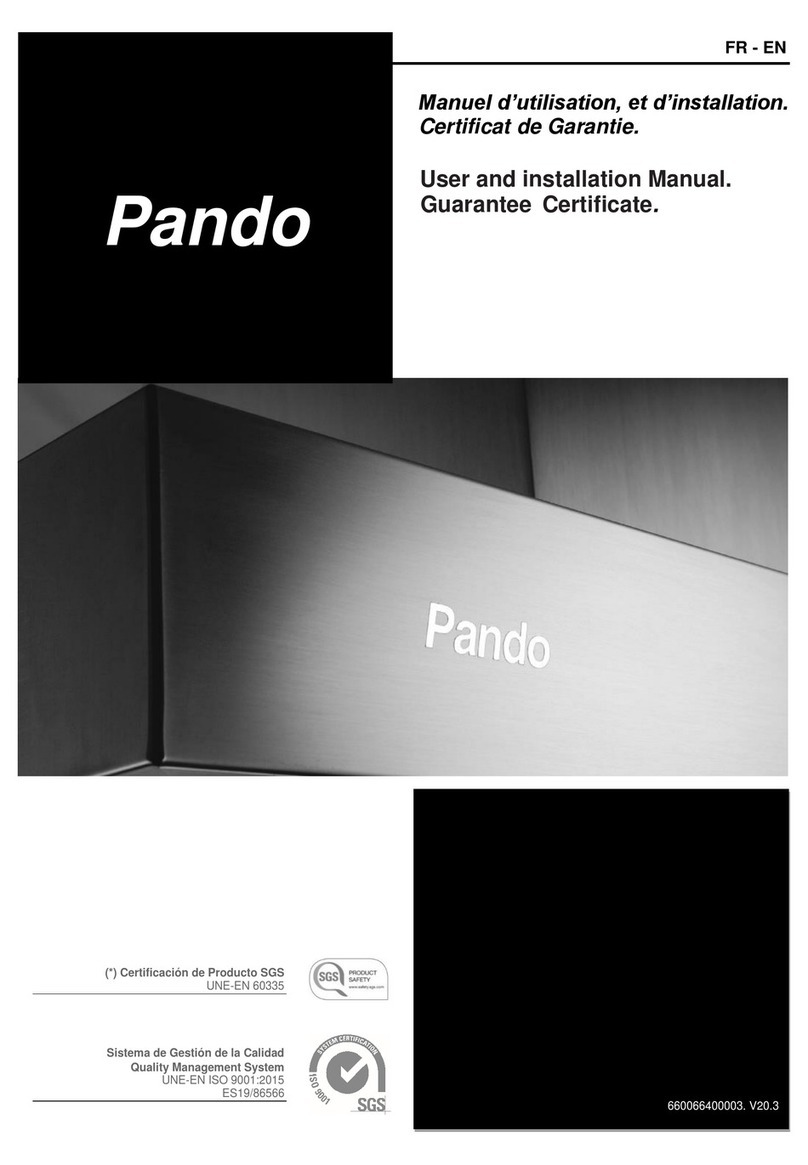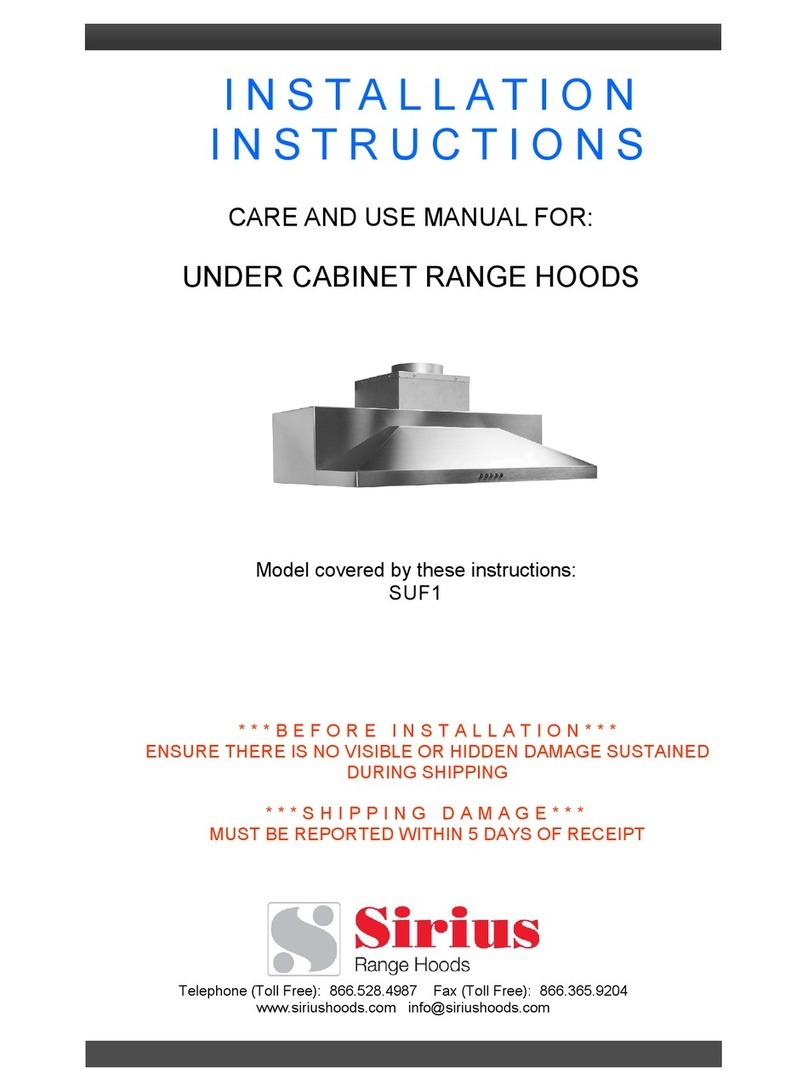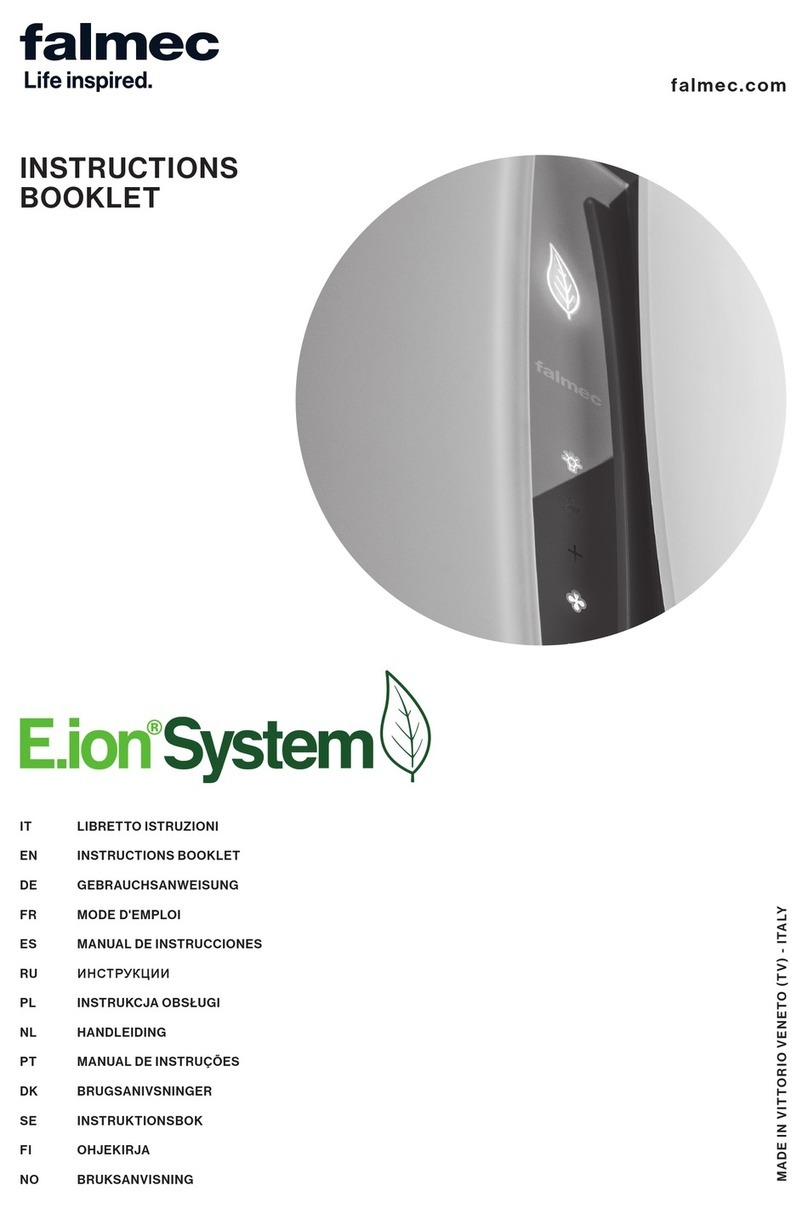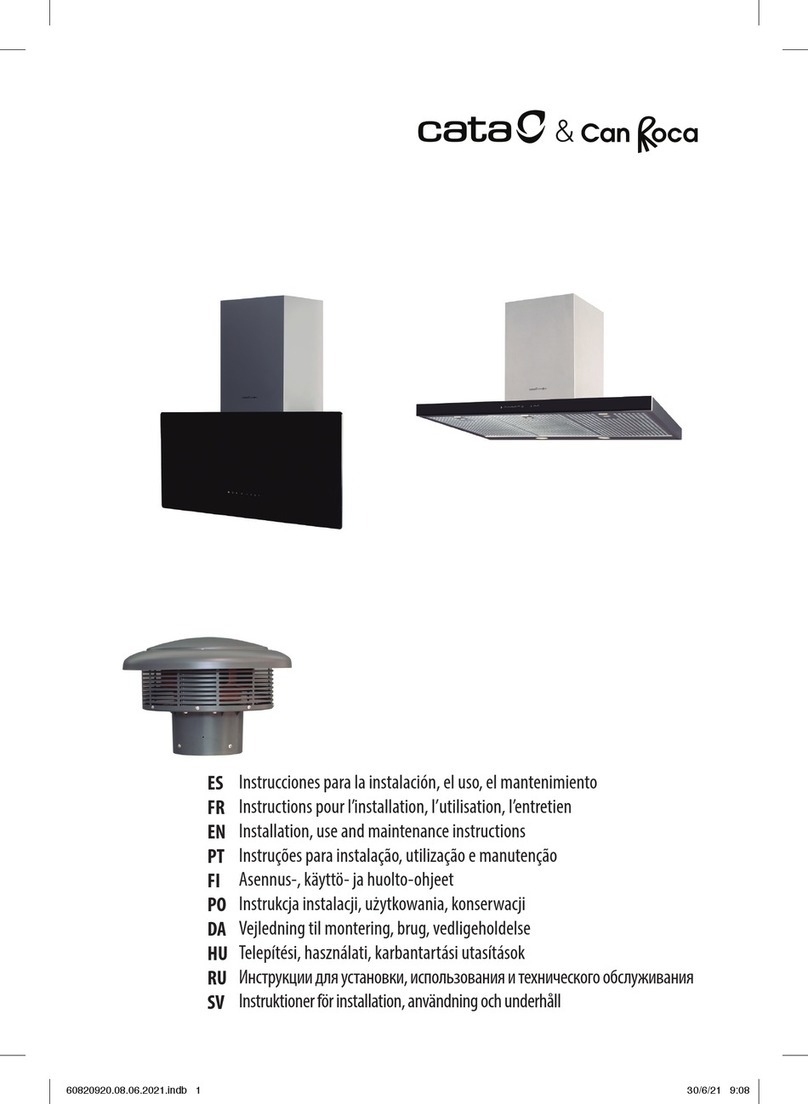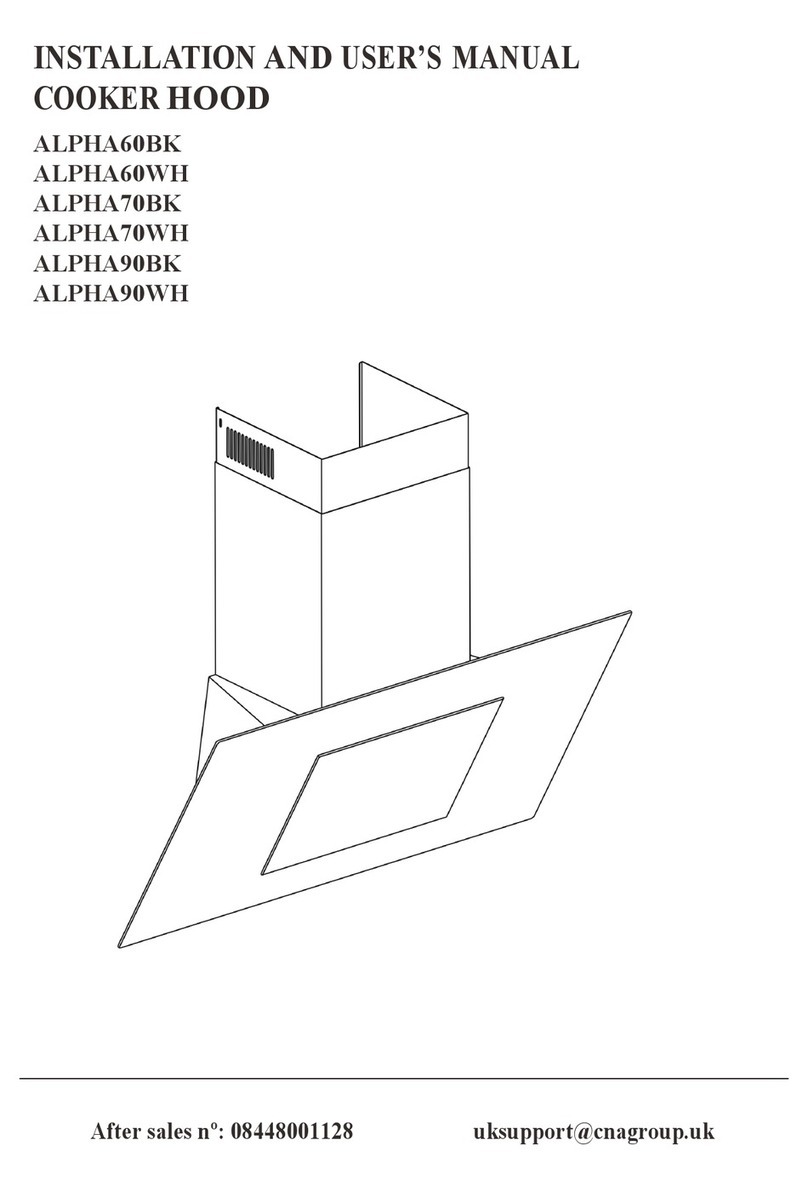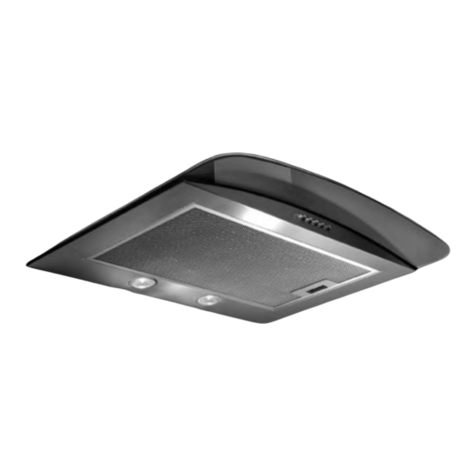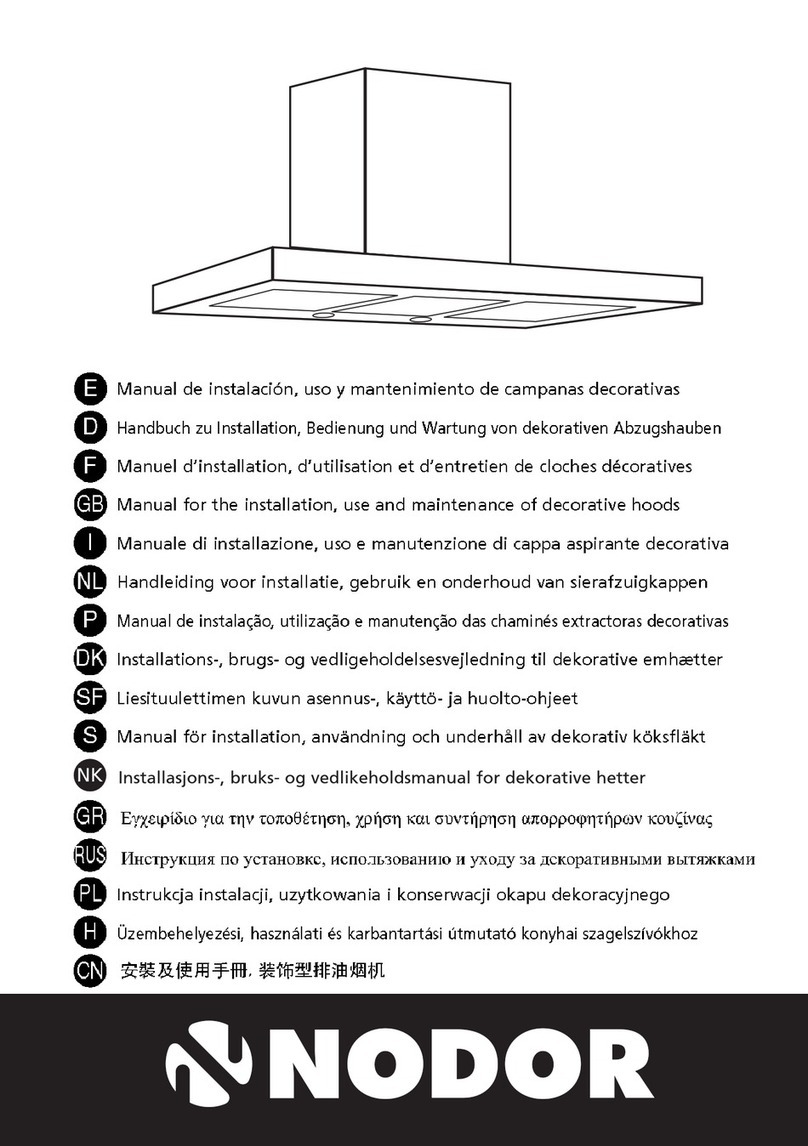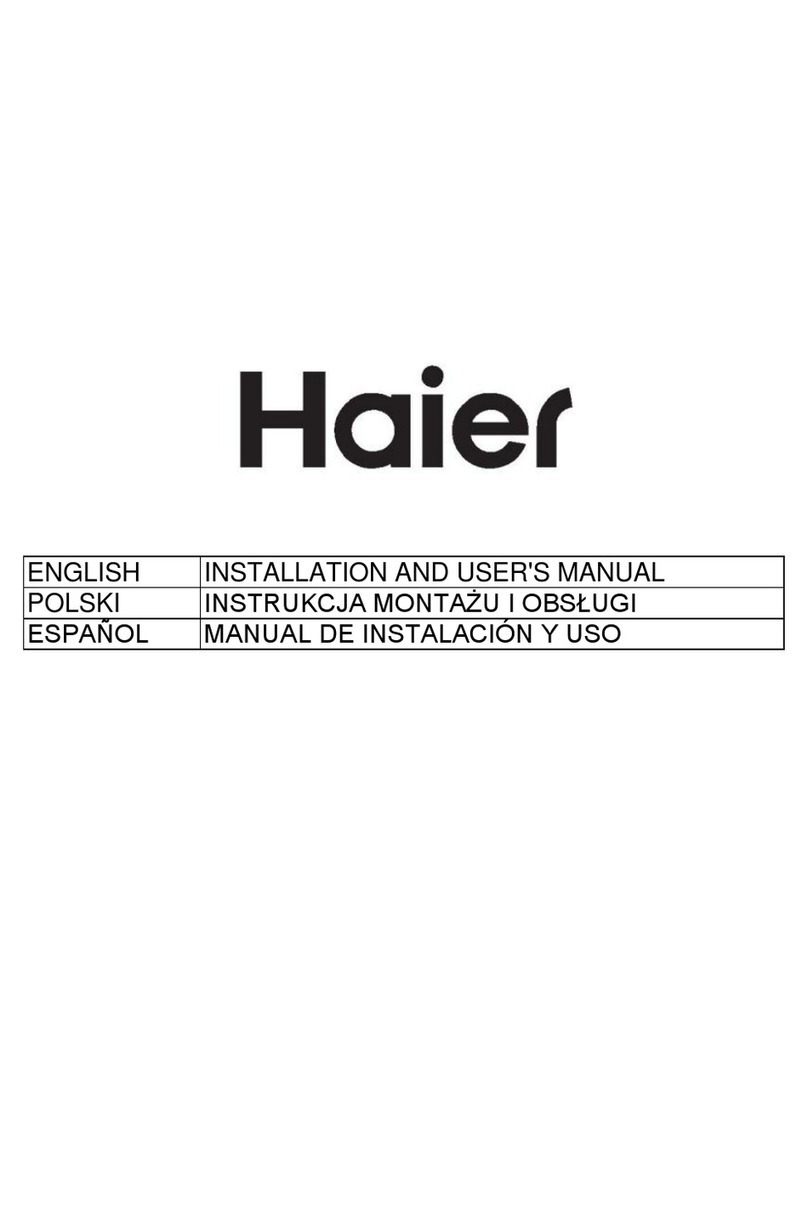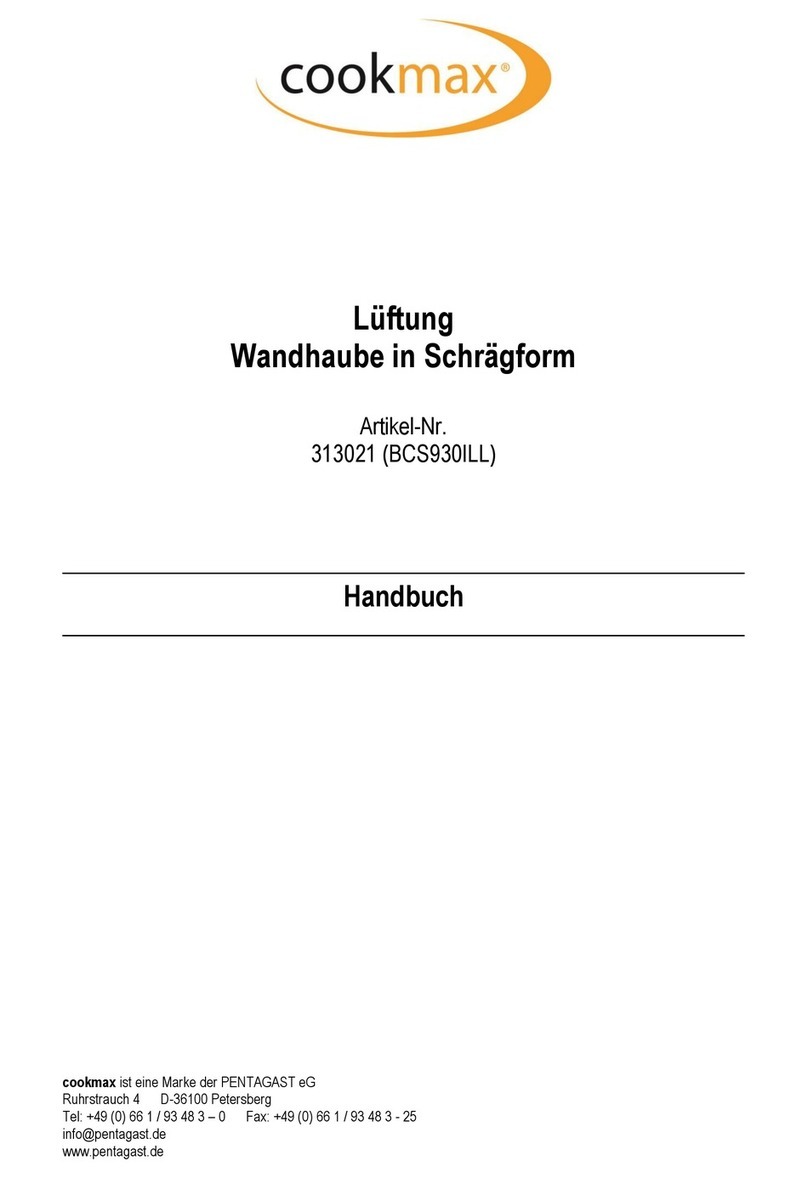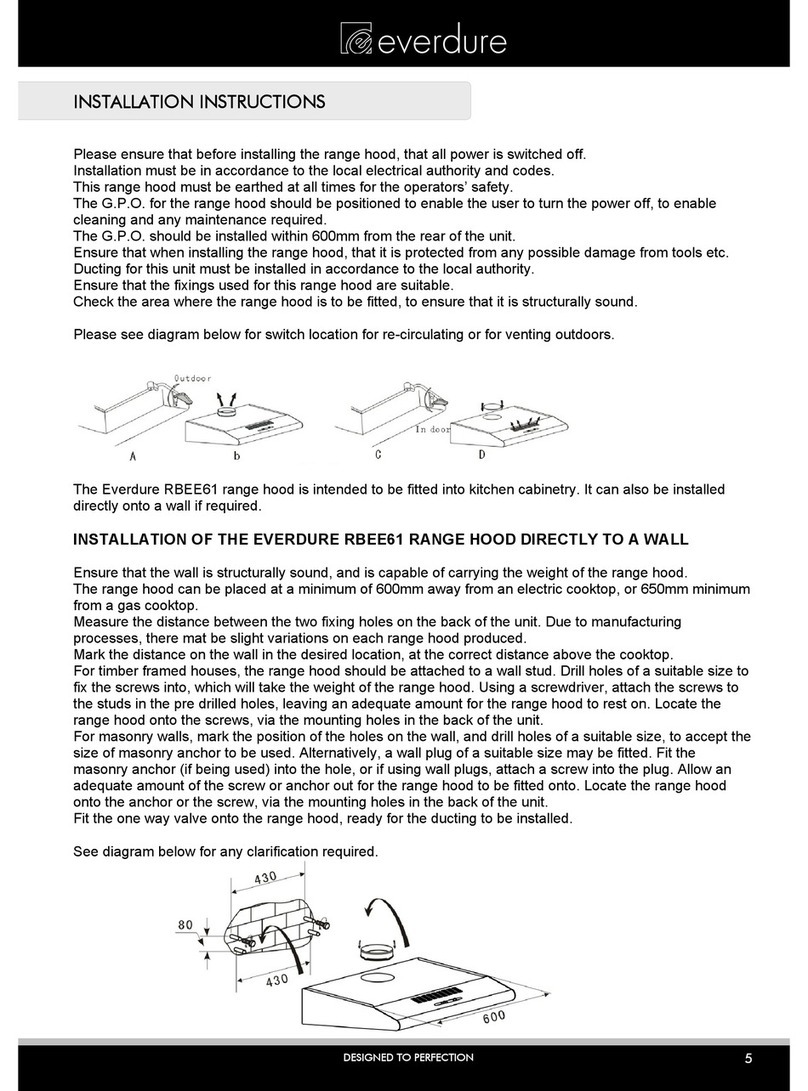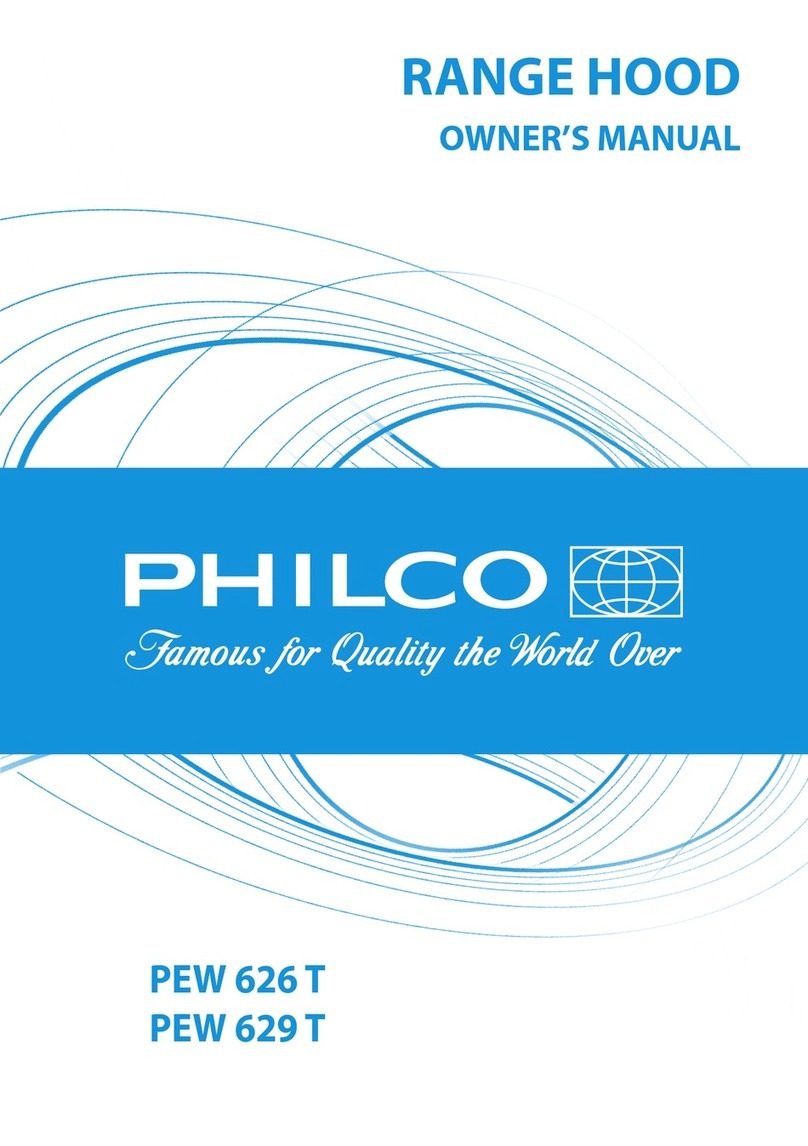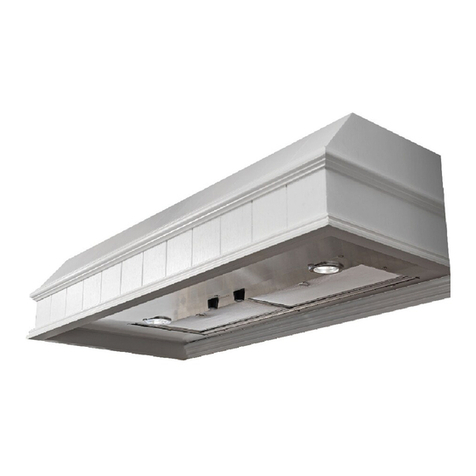•This appliance is not intended for use by
persons (including children) with reduced
physical, sensory, ormental capabilities, or
by those who lack experience and
knowledge, unless they have been given
super vision and instruction concerning the
use of the appliance by a person
responsible for their safety.
Gas safety
•Always put lids on pots and pans when
cooking on a gas cooker.
Operation
Danger of fire!
oDo not flambé under the cooker
hood.
oDo not leave frying pans
unattended during use because
overheated fats or oils might catch
fire.
oNever leave naked flames under
the cooker hood.
oOnly fry underneath the cooker
hood when you are in the kitchen.
oDo not use the cooker hood
without the grease filters, or if
the filters are excessively greasy!
Caution! Accessible parts may
become hot when used with cooking
appliances.
Exhaust operation
Danger!
•During exhaust operation, the cooker hood
removes air from a room. If other fire
sources that require the surrounding air for
combustion are being operated in the
same room, (e.g. gas, oil or coal heaters),
the oxygen they require is taken away.
Thus flames could be suffocated and gas
could leak out or the fumes could be drawn
back into the room.
•In order to guarantee a safe operation,
there should be non- closable openings in
doors, windows or in an air intake wall box
to ensure a fresh supply of combustion
air. This will prevent the combustion fumes
from being drawn back into the room.
•When assessing the measures necessary,
always t ake the entire ventilation system
of the house into consideration. In case of
doubt, ask your local chimney sweeper for
help.
•Never secure the cooker hood to a
ventilation duct, or a room or exhaust gas
chimney! Do not let the air that is
removed from the room be drawn into a
duct where warm air is circulating. The
extracted air should only be drawn outdoors
through a separate ventilating duct that is
only for the extractor hood.
•When in extraction mode, air in the room is
being removed by the cooker hood. Please
make sure that proper ventilation measures
are being observed. The cooker hood
removes odours from room but not steam.
•There shall be adequate ventilation of the
room when the range hood is used at the
same time as appliances burning gas or
other fuels (not applicable to appliances
that only discharge the air back into the
room).
•The air must not be discharged into a flue
that is used for removing fumes from
appliances burning gas or other fuels (not
applicable to appliances that only discharge
the air back into the room).
Cleaning
•There is a fire risk if cleaning is not carried
out in accordance with the instructions.
•Pay attention to the sharp edges inside the
cooker hood, especially during cleaning.
•Always disc onnec t t he power supply
prior to cleaning the cooker hood. If the
switched fused connection unit is difficult
to reach, shut off the power supply by
using the corresponding circuit breaker at
the distribution board.
•Keep the cooker hood clean. Fat deposits
could catch on fire when exposed to high
temperatures.
3. INTENDED USE
•Your cooker hood can be operate d in
recirculated air operation or in exhaust
operation.











